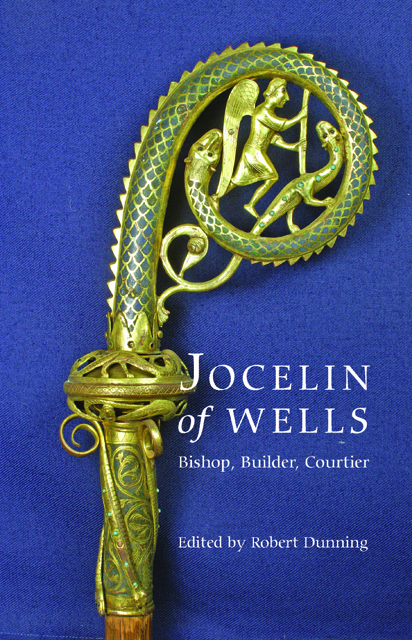8 - The location of Bishop Jocelin’s palace at Wells
Published online by Cambridge University Press: 02 March 2023
Summary
The Bishop’s Palace at Wells is rightly considered to be one of the most important groups of surviving medieval buildings in Britain. Its completeness and modern appearance are, however, the result of long architectural development throughout the Middle Ages, and a certain degree of antiquarian restoration, landscaping and deliberate ruination during the nineteenth century that positioned the palace within its extraordinary setting of gardens, moat and pools.
Understanding the development of this complex site requires the use of a variety of different approaches – documentary, archaeological, antiquarian, architectural and geophysical. Particular difficulties relate to the depth of deposits through the deliberate raising of the ground level to avoid flooding, the intensity of horticultural activity over the years, and the surprising lack of detailed documentary evidence for changes to the buildings and landscapes. The excavation work on the site which took place in 2003–4 was the culmination of a long process of desktop and geophysical survey in order that the scale of invasive archaeology could be kept to an absolute minimum.
This chapter sets out to locate Bishop Jocelin’s palace within its landscape and argues that it was much more extensive than the sole surviving range. This conclusion raises the question of the early plan and layout of the site, and more precisely the function of a medieval bishop and his residence. Antiquarian interest in the Bishop’s Palace dates from the eighteenth century and by the end of the nineteenth the basic architectural sequence was well known. Key illustrative material includes a view of the palace by Samuel and Nathanial Buck dated 1733 (Figure 14) and schematic details shown in William Simes’s map of Wells of 1735 (Figure 15). Of particular importance were John Carter’s sketch and plan of 1784 (Plate 12). Nineteenth- century sources include drawings by John Buckler (1825–47) and A.W. Pugin and two important analyses of the architecture by J.H. Parker (1866) and E. Buckle (1888) (Figure 16).
There have been few previous archaeological investigations on the site. George Henry Law, bishop 1824–45, had archaeological interests: he supported John Skinner, rector of Camerton, in various excavations in Somerset, even displaying some of the finds in the undercroft of the palace.
- Type
- Chapter
- Information
- Jocelin of WellsBishop, Builder, Courtier, pp. 137 - 153Publisher: Boydell & BrewerPrint publication year: 2010



